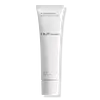What's inside
What's inside
 Key Ingredients
Key Ingredients

 Benefits
Benefits

 Concerns
Concerns

No concerns
 Ingredients Side-by-side
Ingredients Side-by-side

Water
Skin ConditioningSodium Acrylates Crosspolymer-2
AbsorbentGlycerin
HumectantButylene Glycol
HumectantDipropylene Glycol
Humectant1,2-Hexanediol
Skin ConditioningC12-14 Pareth-12
EmulsifyingCaprylyl Glycol
EmollientEctoin
Skin ConditioningCarbomer
Emulsion StabilisingTromethamine
BufferingEthylhexylglycerin
Skin ConditioningMeteorite Powder
Skin ConditioningSodium Hyaluronate
HumectantCitrus Limon Fruit Extract
MaskingPseudanabaena Galeata Extract
Skin ConditioningCI 19140
Cosmetic ColorantCI 42090
Cosmetic ColorantWater, Sodium Acrylates Crosspolymer-2, Glycerin, Butylene Glycol, Dipropylene Glycol, 1,2-Hexanediol, C12-14 Pareth-12, Caprylyl Glycol, Ectoin, Carbomer, Tromethamine, Ethylhexylglycerin, Meteorite Powder, Sodium Hyaluronate, Citrus Limon Fruit Extract, Pseudanabaena Galeata Extract, CI 19140, CI 42090
Water
Skin ConditioningGlycerin
HumectantSodium Acrylates Crosspolymer-2
AbsorbentButylene Glycol
HumectantDipropylene Glycol
HumectantPentylene Glycol
Skin ConditioningSalix Alba Bark Extract
AstringentLaminaria Saccharina Extract
Skin ProtectingLactobacillus Ferment
Skin ConditioningNiacinamide
SmoothingTrimethylpentanediol/Adipic Acid/Glycerin Crosspolymer
Skin ConditioningAcetyl Glucosamine
Skin ConditioningSodium Hyaluronate
HumectantPyridoxine Hcl
Skin ConditioningZinc Sulfate
AntimicrobialPhenoxyethanol
PreservativeWater, Glycerin, Sodium Acrylates Crosspolymer-2, Butylene Glycol, Dipropylene Glycol, Pentylene Glycol, Salix Alba Bark Extract, Laminaria Saccharina Extract, Lactobacillus Ferment, Niacinamide, Trimethylpentanediol/Adipic Acid/Glycerin Crosspolymer, Acetyl Glucosamine, Sodium Hyaluronate, Pyridoxine Hcl, Zinc Sulfate, Phenoxyethanol
 Reviews
Reviews

Ingredients Explained
These ingredients are found in both products.
Ingredients higher up in an ingredient list are typically present in a larger amount.
Butylene Glycol (or BG) is used within cosmetic products for a few different reasons:
Overall, Butylene Glycol is a safe and well-rounded ingredient that works well with other ingredients.
Though this ingredient works well with most skin types, some people with sensitive skin may experience a reaction such as allergic rashes, closed comedones, or itchiness.
Learn more about Butylene GlycolDipropylene Glycol is a synthetically created humectant, stabilizer, and solvent.
This ingredient helps:
Dipropylene glycol is technically an alcohol, but it belongs to the glycol family (often considered part of the ‘good’ alcohols). This means it is hydrating and gentle on skin unlike drying solvent alcohols like denatured alcohol.
As a masking agent, Dipropylene Glycol can be used to cover the smell of other ingredients. However, it does not have a scent.
Studies show Dipropylene Glycol is considered safe to use in skincare.
Learn more about Dipropylene GlycolGlycerin is already naturally found in your skin. It helps moisturize and protect your skin.
A study from 2016 found glycerin to be more effective as a humectant than AHAs and hyaluronic acid.
As a humectant, it helps the skin stay hydrated by pulling moisture to your skin. The low molecular weight of glycerin allows it to pull moisture into the deeper layers of your skin.
Hydrated skin improves your skin barrier; Your skin barrier helps protect against irritants and bacteria.
Glycerin has also been found to have antimicrobial and antiviral properties. Due to these properties, glycerin is often used in wound and burn treatments.
In cosmetics, glycerin is usually derived from plants such as soybean or palm. However, it can also be sourced from animals, such as tallow or animal fat.
This ingredient is organic, colorless, odorless, and non-toxic.
Glycerin is the name for this ingredient in American English. British English uses Glycerol/Glycerine.
Learn more about GlycerinWe don't have a description for Sodium Acrylates Crosspolymer-2 yet.
Sodium Hyaluronate is hyaluronic acid's salt form. It is commonly derived from the sodium salt of hyaluronic acid.
Like hyaluronic acid, it is great at holding water and acts as a humectant. This makes it a great skin hydrating ingredient.
Sodium Hyaluronate is naturally occurring in our bodies and is mostly found in eye fluid and joints.
These are some other common types of Hyaluronic Acid:
Learn more about Sodium HyaluronateWater. It's the most common cosmetic ingredient of all. You'll usually see it at the top of ingredient lists, meaning that it makes up the largest part of the product.
So why is it so popular? Water most often acts as a solvent - this means that it helps dissolve other ingredients into the formulation.
You'll also recognize water as that liquid we all need to stay alive. If you see this, drink a glass of water. Stay hydrated!
Learn more about Water